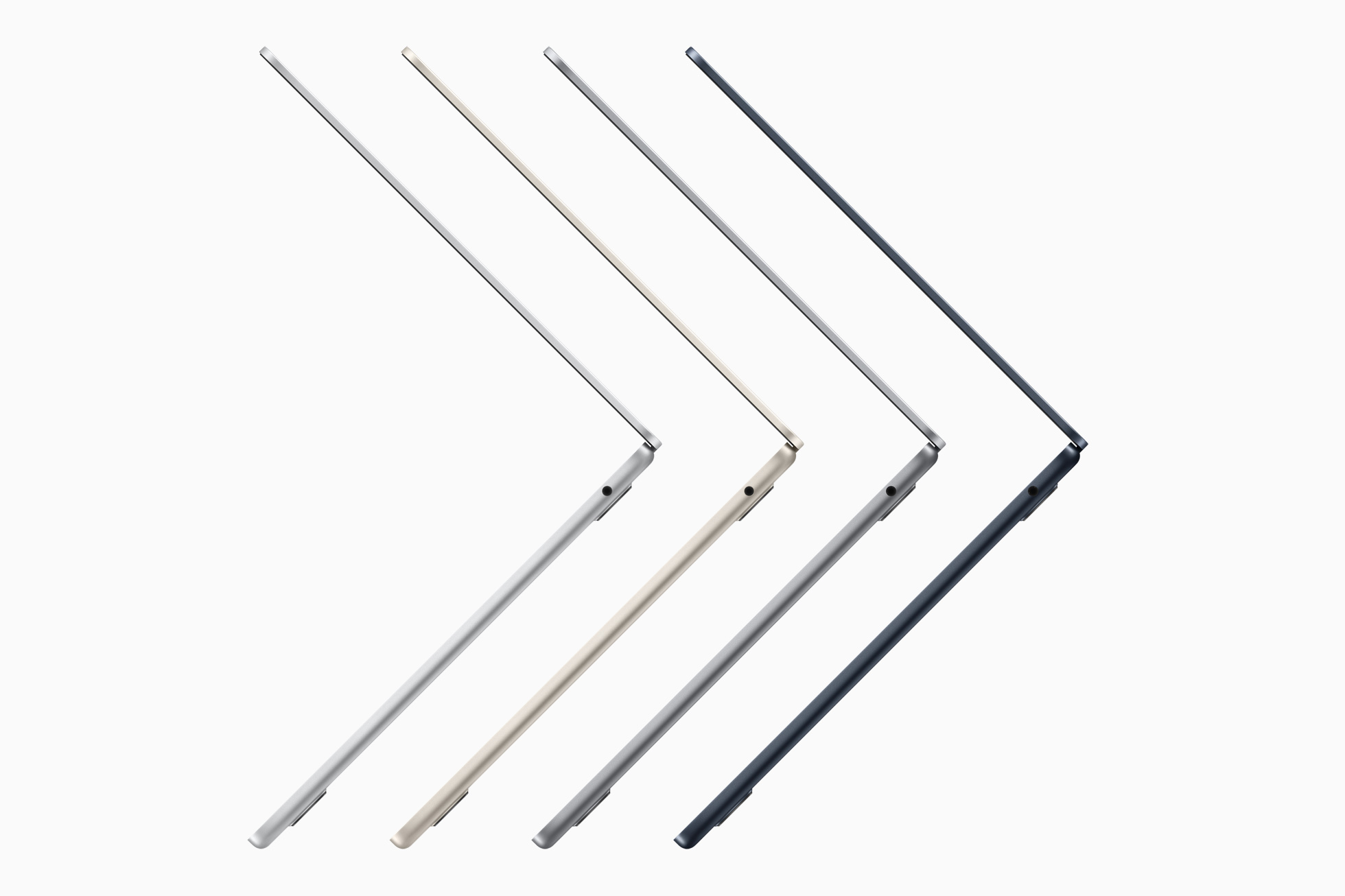At its Worldwide Developers Conference (WWDC) event held on June 6, Apple announced an updated MacBook Air, one of its most popular Macs, with the brand new M2 system-on-chip (SoC) and a plethora of hardware and software enhancements. However, the previous generation MacBook Air still stands as an attractive option.
The M2 chip
The focal point of this generation’s refresh is of course the new M2 SoC. While it isn’t as fast as the M1 Pro and M1 Ultra, it still provides an appreciable boost over the M1. Built with 20 billion 5nm transistors, the M2 has an eight-core processor, expanded cache, and wider memory bandwidth. Apple says these improvements amount to an 18 per cent processor performance increase over the previous generation M1.
Additionally, the M2 chip increases the graphics core count from seven to 10, boosting its performance in GPU-accelerated workloads and in games. Thanks to the higher core count and optimizations, the M2’s GPU is 25 per cent faster than the M1 at the same power level (basically scaled directly according to core count) and 35 per cent faster at peak power.
Other systems on the M2 include a renewed Neural Engine that can process more than 40 per cent more operations than the M1, and a high-bandwidth media decoder that supports 8K H.264 and HEVC video. And of course, the M2 still comes with Apple’s latest Secure Enclave, a staple for its Macs based on the M-series chips.
The refreshed MacBook Air
The MacBook Air leaves behind its signature tapered design and embraces the same round block aesthetics as the MacBook Pro. Before this overhaul, the MacBook Air was thickest at the hinge, then progressively narrowed to its thinnest point below the palm rest. Although the old design is gone, it’s still as light as ever, weighing just 1.24kg and measuring 1.13cm thin. The fully metal body is crafted using 100 per cent recycled aluminum to be a little more environmentally friendly.

The MacBook Air still starts with just 8GB of unified memory and 256GB of SSD storage. The base configuration also uses an M2 chip with an eight-core GPU. The full M2 with the 10 core GPU is locked behind the higher-end configuration with 512GB of storage. However, the maximum memory capacity has been expanded to 24GB. The maximum configurable storage is still 2TB. All models are still passively cooled, meaning that there are no fans to create noise no matter the workload.
The performance increase does not come at the expense of battery life. Apple says the new MacBook Air boasts up to 18 hours of use on a single charge. The device also supports fast-charging to up to 50 per cent in 30 minutes with the optional 67W USB-C power adapter, sold separately, of course.
Performance aside, the immediately noticeable difference is the display. Not only is it now larger, growing from 13.3-inch to 13.6-inch, but it’s also been kicked up to a Liquid Retina display, which supports the full DCI-P3 colour gamut and achieves a peak brightness of 500 nits.
Port selection on the MacBook Air is standard for a 2022 ultraportable device, coming with two Thunderbolt/USB4 combo ports and a 3.5mm headphone jack. It lacks the HDMI and the MicroSD card slot on the more expensive MacBook Pros, but it’s also lighter. Give some and take some I guess.

The MacBook Air features the same Magic Keyboard with scissor switches and a full-height function row, inverted-T arrow keys, and a Touch ID power button. Complementing the keyboard is Apple’s signature Force Touch haptic glass trackpad, colour matched to the chassis.

Speaking of colours, the MacBook Air comes in four: Midnight, Starlight, Space Grey and Silver.
Supporting remote work is a 1080p FaceTime HD camera, a four-speaker sound system, and a triple microphone array. Apple says the new camera’s increased resolution delivers twice the low-light performance as the previous 720p webcam. The microphones use beamforming algorithms to clearly capture the speaker’s voice.

There are other quality of life improvements as well, such as the MagSafe 3 charging port. The power adapter features two USB-C ports to charge other devices. The base model comes with a 30W adapter while the higher-end model with the full M2 chip comes with a 35W adapter.
Do the improvements justify the cost?
Apple’s new M2-based MacBook Air starts at C$1,499, C$200 higher than the previous generation. The configuration with the 10-core GPU starts at C$1,899, pushing buyers towards the 13-inch MacBook Pro, which has also been updated with the M2 chip and starts at $1,699.
For the price, users get a larger, crisper display, faster performance and a few neat extras. They are all welcome features, but it’s not like the M1 MacBook Air is slow by any means, especially in daily workloads, which is what the MacBook Air is generally intended for. If price is no object, or this is the first upgrade in a few years, then yes, the refreshed MacBook Air is clearly the better buy. With that said, the M1 MacBook Air is still a fantastic choice for tackling basic chores: emails, web browsing, researching for a school paper and the like. Moreover, the extra $200 saved can go towards a nice backpack, wireless headphones, or a second display. It’s definitely worth considering the M1 MacBook Air for those looking for value.
